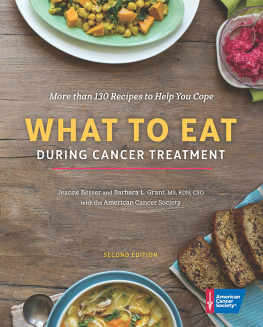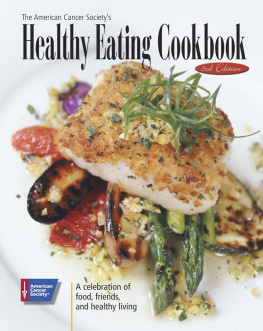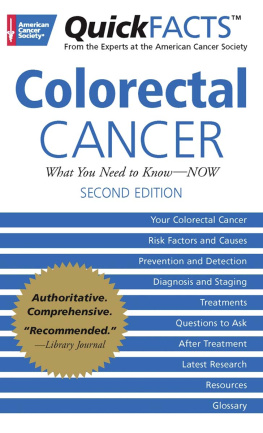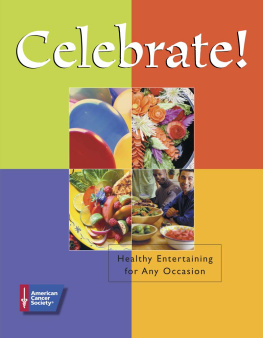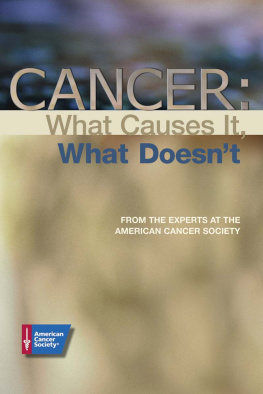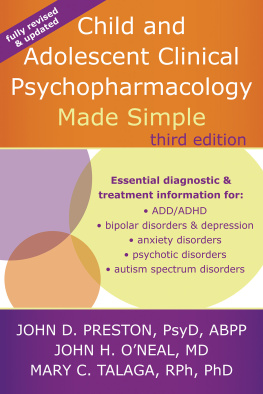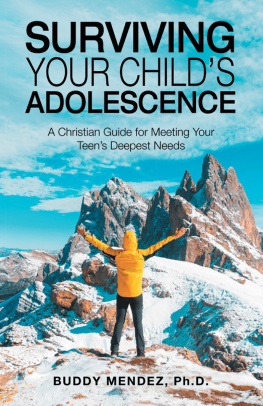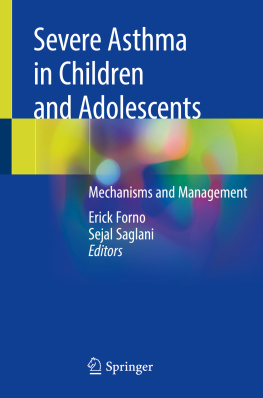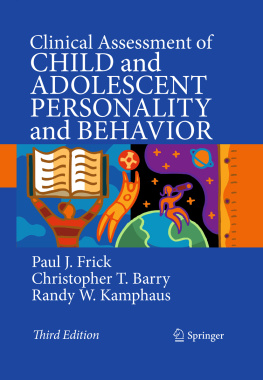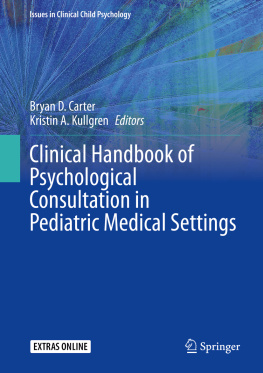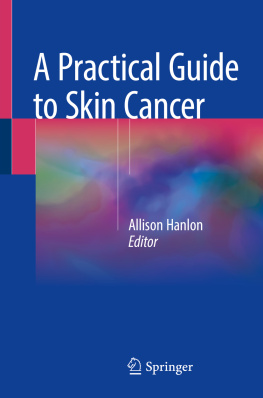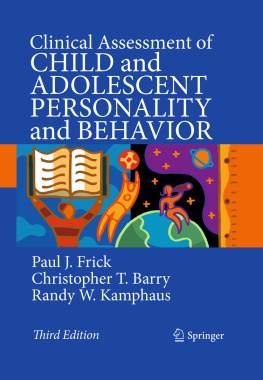Table of Contents
Landmarks
Published by the American Cancer Society
250 Williams Street NW, Atlanta, GA 30303-1002
Copyright 2019 American Cancer Society
First edition 2009. Second edition 2019.
Printed in Canada
5 4 3 2 1 19 20 21 22 23
All rights reserved. Without limiting the rights under copyright reserved above, no part of this publication may be reproduced, stored in or introduced into a retrieval system, or transmitted in any form or by any means (electronic, mechanical, photocopying, recording, or otherwise) without the prior written permission of the publisher.
Recipes shown on cover, clockwise from top: Chickpea and Sweet Potato Curry, p. 243; Cranberry-Lime Granita, p. 148; Date and Fruit Bread, p. 109; Miso-Chicken Soup, p. 50. Back cover, clockwise from bottom: Raspberry Chia Pudding, p. 121; Rosemary Sweet and Spicy Nuts, p. 222; Carrot-Ginger Drink, P. 34; Lemon-Herb Tilapia Packets, p. 76.
Additional Photo Credits: p. 6, Tatiana Bralnina/ shutterstock.com ; p. 9, baibaz/ shutterstock.com ; p. 10, Brooke Becker/ shutterstock.com ; p. 11, Africa Studio/ shutterstock.com ; p. 17 (top to bottom), Lana Langlois/ shutterstock.com , Hong Vo/ shutterstock.com ; p. 18, eugena-klykova/ shutterstock.com ; p.19, Andrei Kuzmik/ shutterstock.com ; p.21, squarelogo/ shutterstock.com ; p. 248, Foxys Forest Manufacture/ shutterstock.com ; p. 255 (top to bottom), Dan Thornberg/ shutterstock.com , AG-PHOTOS/ shutterstock.com , Sashkin/ shutterstock.com , Lipskiy/ shutterstock.com , Tatiana Popova/ shutterstock.com , Africa Studio/ shutterstock.com
Library of Congress Cataloging-in-Publication Data is available.
Photography by Angie Mosier
Food styling by Jeanne Besser
Design and composition by Katie Jennings Campbell Indexing by Bob Land
Nutritional analysis by Madelyn Wheeler, MS, RD
American Cancer Society
Editorial and Production
Senior Vice President, Cancer Control Programs and Services: Chuck Westbrook
Managing Director, Content: Eleni Berger
Senior Director, Journals and Book Publishing: Esmeralda Galn Buchanan
Book Publishing Manager: Vanika Jordan, MSPub
Senior Editor, Book Publishing: Jill Russell
Medical and Nutritional Review
Managing Director, Nutrition and Physical Activity: Colleen Doyle, MS, RD
Director, Cancer Information: Amy Sherrod, RN, MSN, CPNP
Medical Editor: Mamta Kalidas, MD
Associate Editor: Mahal Lynn Gadd, MSN, MBA, RN, OCN
Quantity discounts on bulk purchases of this book are available. For information, please send an e-mail to .
For more information about cancer, contact your American Cancer Society at 800-227-2345 or cancer.org .
CONTENTS
NAUSEA N
DIARRHEA D
CONSTIPATION C
TROUBLE SWALLOWING TS
SORE MOUTH OR THROAT SM
UNINTENTIONAL WEIGHT LOSS WL
TASTE CHANGES TC
If you are reading this, you or someone you know is going through or preparing for cancer treatment. A cancer diagnosis is life changing, and this can be a stressful and difficult time, a time often filled with challenges and change. Not everyone experiences side effects, and for those who do, not everyone experiences the same side effects or experiences them in the same way. A person going through cancer treatment has unique nutritional needs and issues related to eating; whats more, these needs may change throughout the cancer experience. Your appetite may change from day to day. Foods may not taste or smell the way they did before treatment, and you may be surprised by some of the foods that appeal to you. You may have to deal with unintended weight loss or gain.
Many people going through cancer ask if diet and nutrition can help them fight and recover from cancer. The answer is yes! No matter what side effects you experience, nutrition will be an essential part of dealing with your cancer and cancer treatment. Healthy eating and staying hydrated can help fuel recovery, help you manage side effects, and keep your body strong.
Some people going through cancer treatment continue to enjoy eating and have a normal appetite throughout treatment. Others have days when they dont feel like eating at all. For many, side effects come and go. Not eating enough can lead to weight loss, and weight loss can lead to weakness and fatigue. Eating as well as you can during your treatment and your recovery is an important part of taking care of yourself.
There are no hard and fast rules about how to eat during cancer treatment. Eat as healthfully as possiblethe importance of this cannot be overstated. However, eating during treatment may be different in many ways from how you ate before. Eating well does not mean that you need to be perfect. Try to select a variety of nutritious foods each day to help keep your body healthy. But do not be too hard on yourself if the foods you can tolerate are not the most nutritious or if you have days during which your appetite is poor. There will be times when what you can eat is impacted by your treatment and its effect on your body.
You will find some recipes in this book that are higher in calories, fat, or sugar than typically recommended as part of the daily diet for someone without cancer. Managing side effects can require a different approach. Balance is key, and the nutritional needs of a person going through cancer treatment are unique and different from those of someone without cancer.
In many ways, this is not a typical cookbook. Recipes are organized by side effect: nausea, diarrhea, constipation, trouble swallowing, sore mouth or throat, unintentional weight loss, and taste changes. As youre reading through the recipes, look for these symbols at the top of the page:
N NAUSEA
D DIARRHEA
C CONSTIPATION
TS TROUBLE SWALLOWING
SM SORE MOUTH OR THROAT
WL UNINTENTIONAL WEIGHT LOSS
TC TASTE CHANGES
For reference, a couple of lists are included to help you find the recipes that will be most useful to you. In the beginning of the book, there is a list of all recipes by chapter, with symbols beside each indicating the side effects for which it is appropriate. At the back of the book (pages 261266), you will also find a complete list of recipes for each side effect, to give a clear, easy-to-understand picture of what might be best for you. Keep in mind that many of the recipes work for people dealing with more than one side effect. For example, the on page 121 appears in the chapter for constipation, but may also be appropriate if you are experiencing taste changes, so both the C and TC icons appear on that page.
Most people with cancer have families that are going through this experience along with them. While the recipes are focused on a cancer patients specific needs, most are also nutritious and easy to prepare and are also intended for the family or caretaker to enjoy. Since these recipes are written for people who are undergoing treatment, some are mildly flavored. Tips throughout the book give suggestions for ways to adapt the recipes for family members or for when the side effect has resolved. As you start to feel better, you can tweak the recipes to suit your changing tastes and needs.
Some people with cancer are also dealing with other health problems, such as diabetes, heart disease, or high blood pressure. Many of the recipes in this book are appropriate for people with other health issues, but if this applies to you, make sure your regular doctors know you are being treated for cancer, and always follow the advice of your health care team. If you are already on a diet for a particular health condition, make sure that you speak with your doctor before you make changes.

